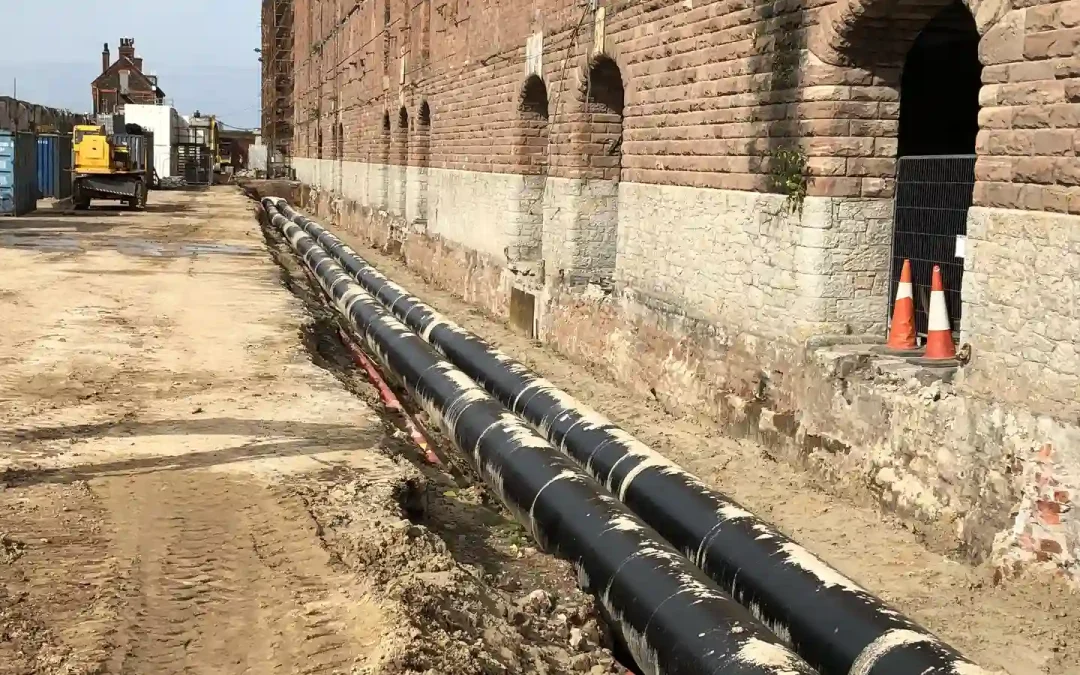As the UK transitions to net zero carbon over the next decades, district heat networks offer a cost effective way to provide low carbon heat and hot water to homes and businesses.
As the UK transitions to net zero carbon over the next decades, district heat networks offer a cost effective way to provide low carbon heat and hot water to homes and businesses.
Instead of each property having its own boiler, heat networks connect multiple homes and businesses to a centralised energy centre. Heat and hot water are circulated via a series of super insulated pipes, and each property has its own heating interface unit to control individual demand. Lower overall capacity is required, so less carbon is generated than with traditional systems.
The energy centre utilises sustainable technologies, which can be upgraded over time with no disruption to supply. Customers continuously benefit from the latest technologies, including those which are unsuitable for individual properties. Waste heat from industry can be re-distributed throughout the network to heat people’s homes, further lowering their carbon footprint.
District heat networks do require significant investment, but are more cost and energy efficient over their lifespan than traditional systems. In 2018 The UK government launched the Heat Networks Investment Project (HNIP) to provide £320 million of funding for new networks. Currently only 2% of homes in the UK are connected to district heat network, which the government aims to increase to 17% by 2050.
CWC have worked on a number of district heat networks in the UK including Mersey Heat, which will serve the new Liverpool Waters development and the surrounding area.
Want to know more? Lets talk
